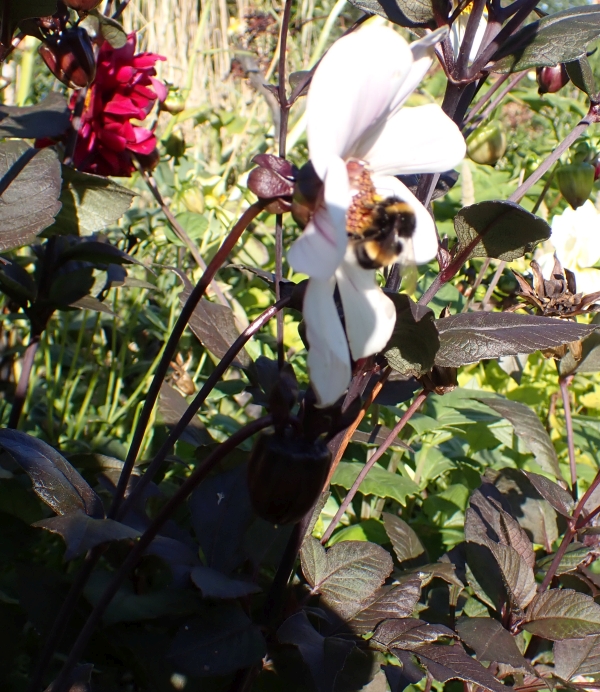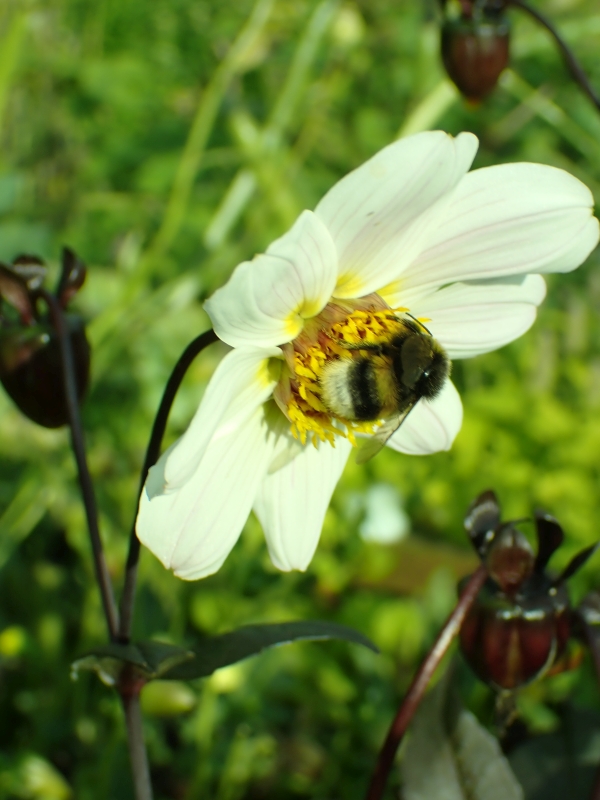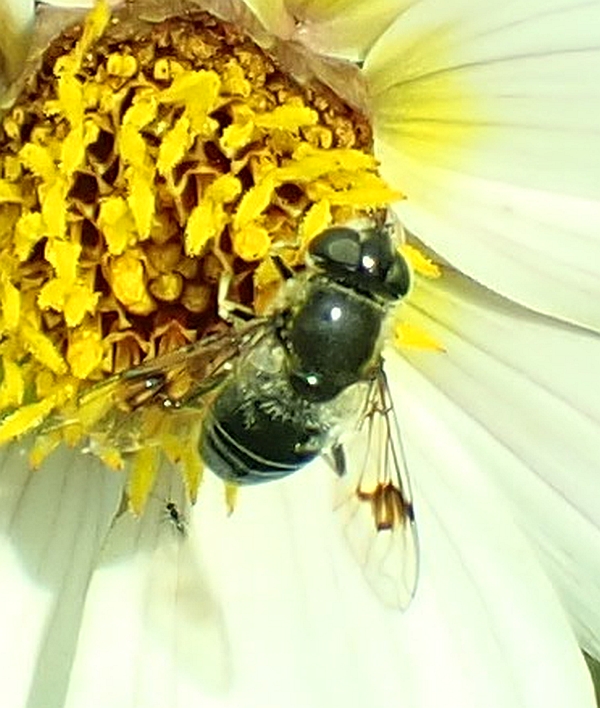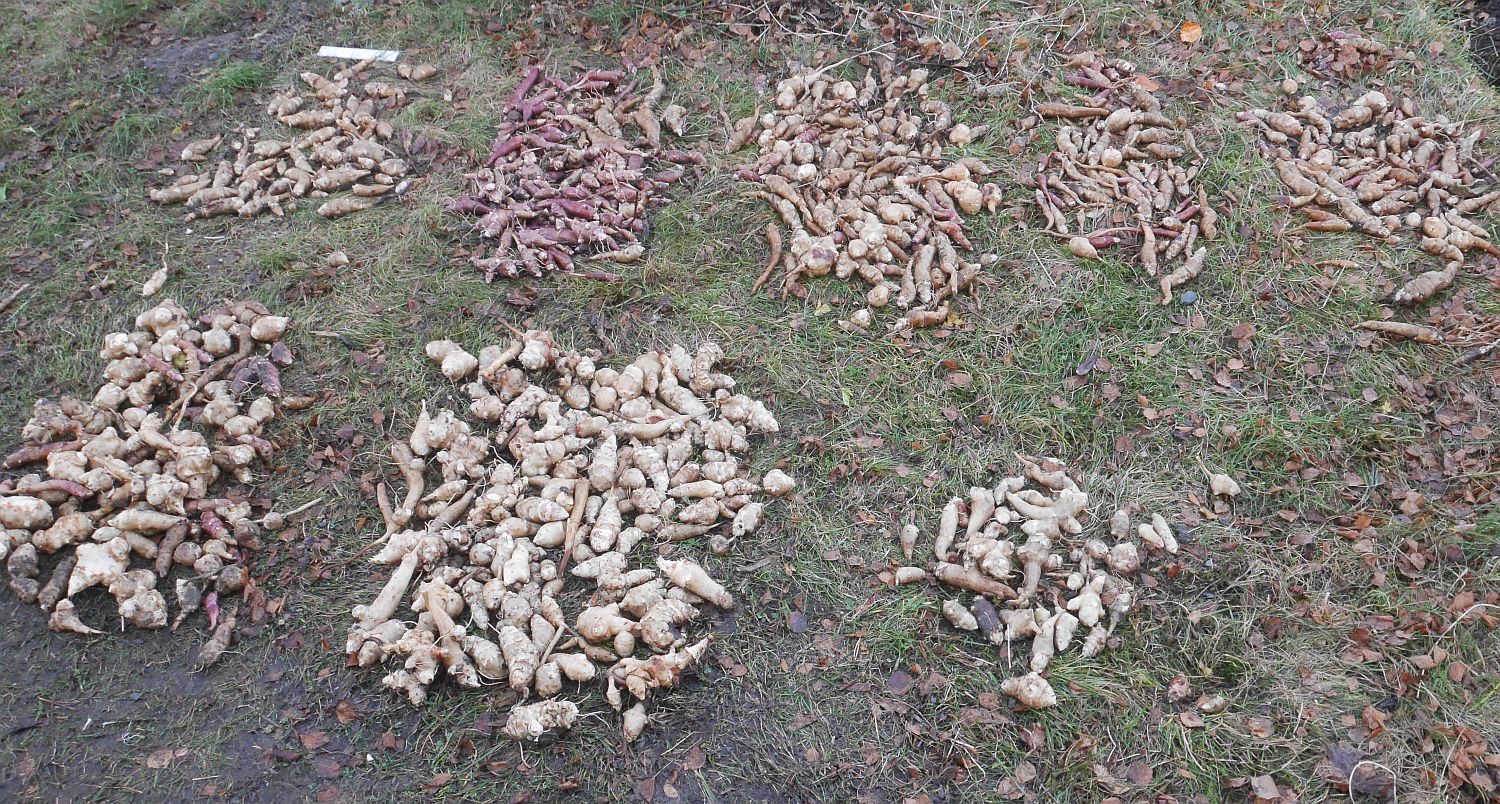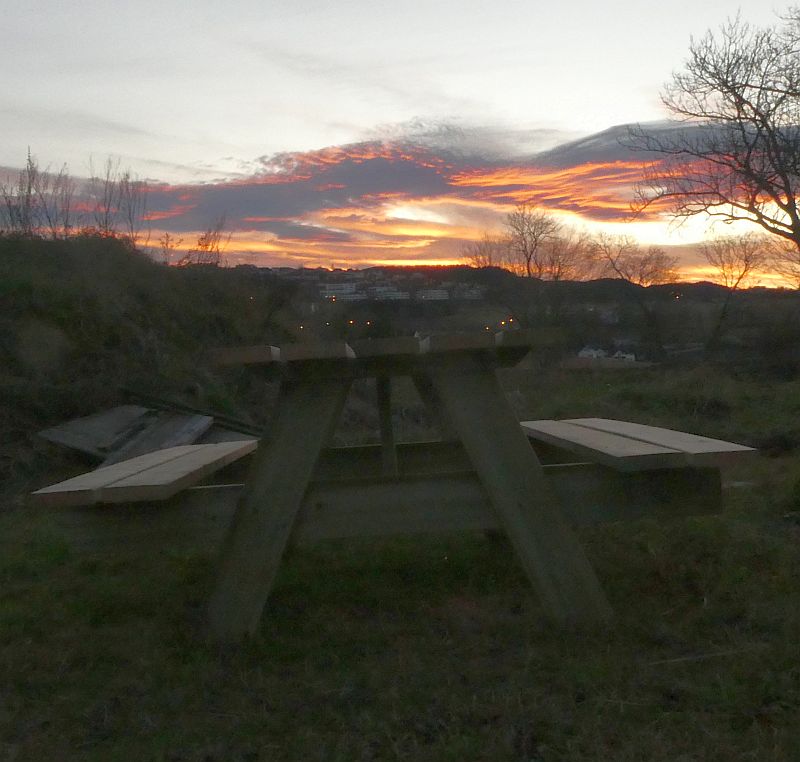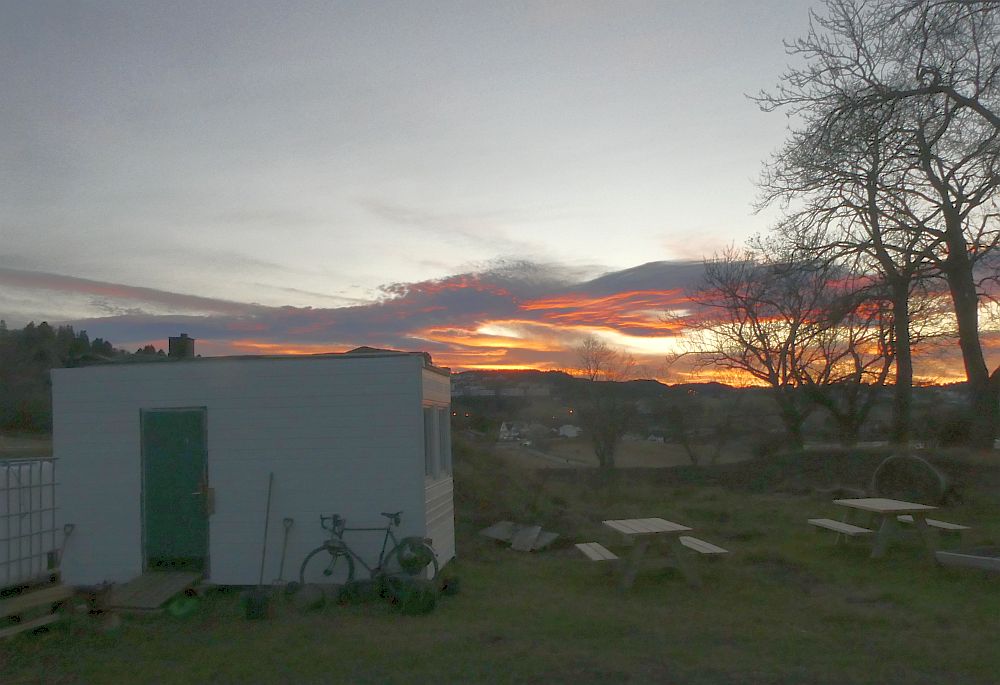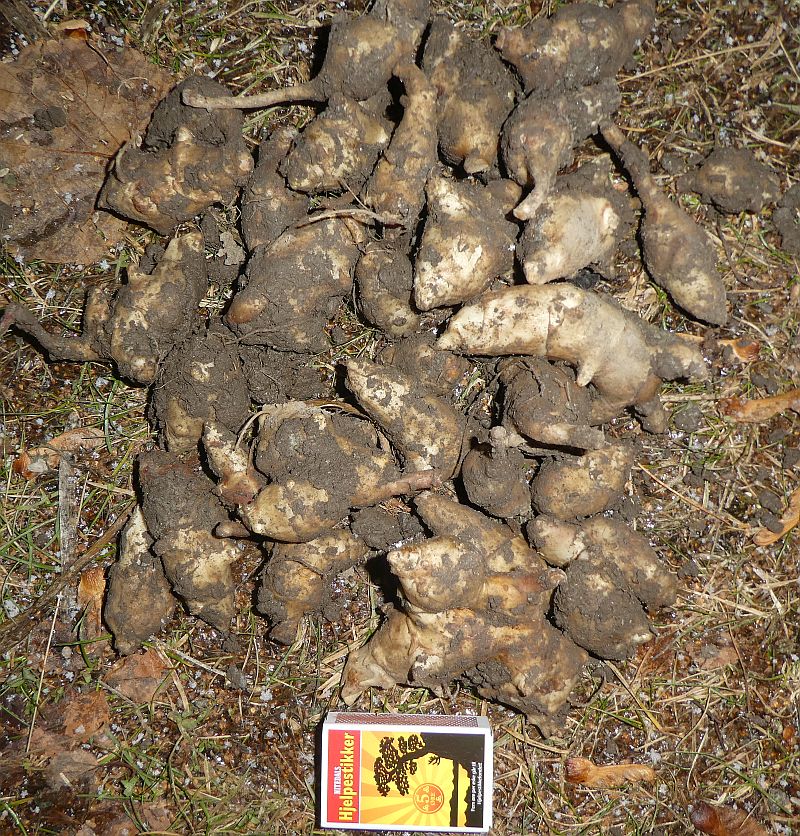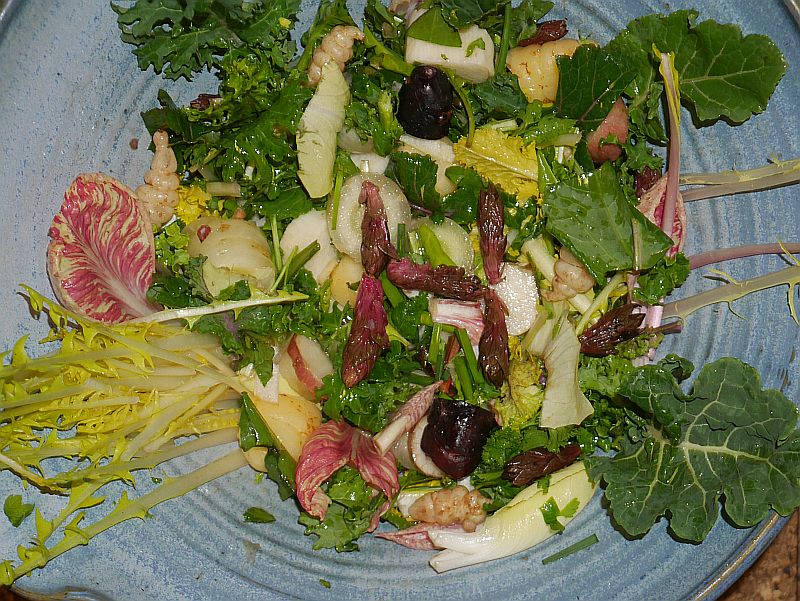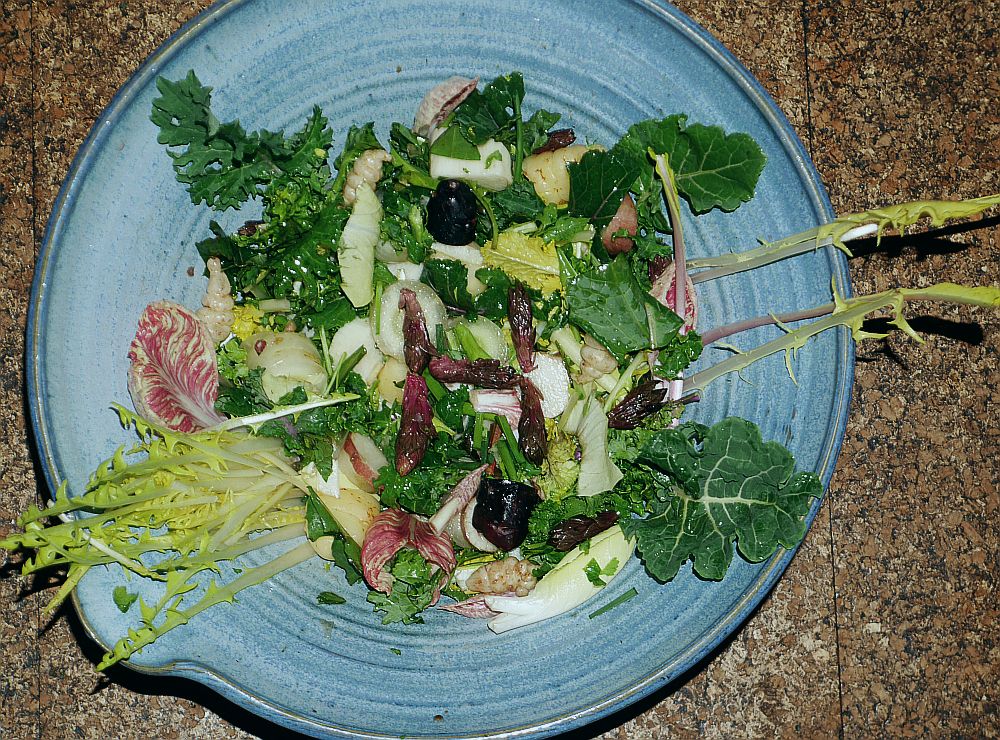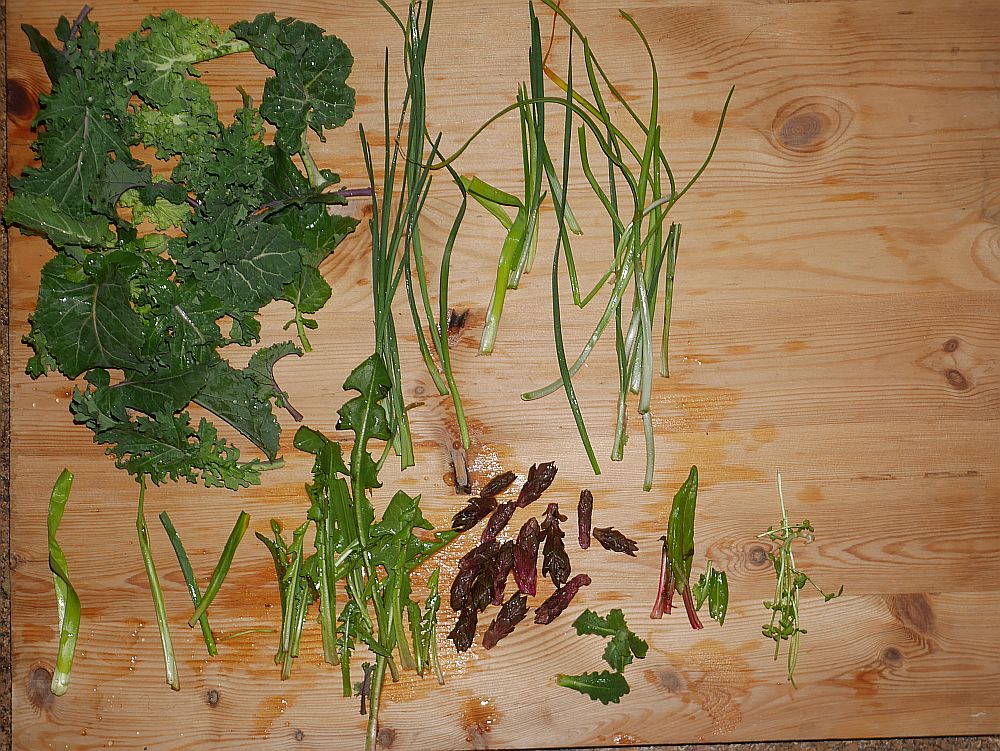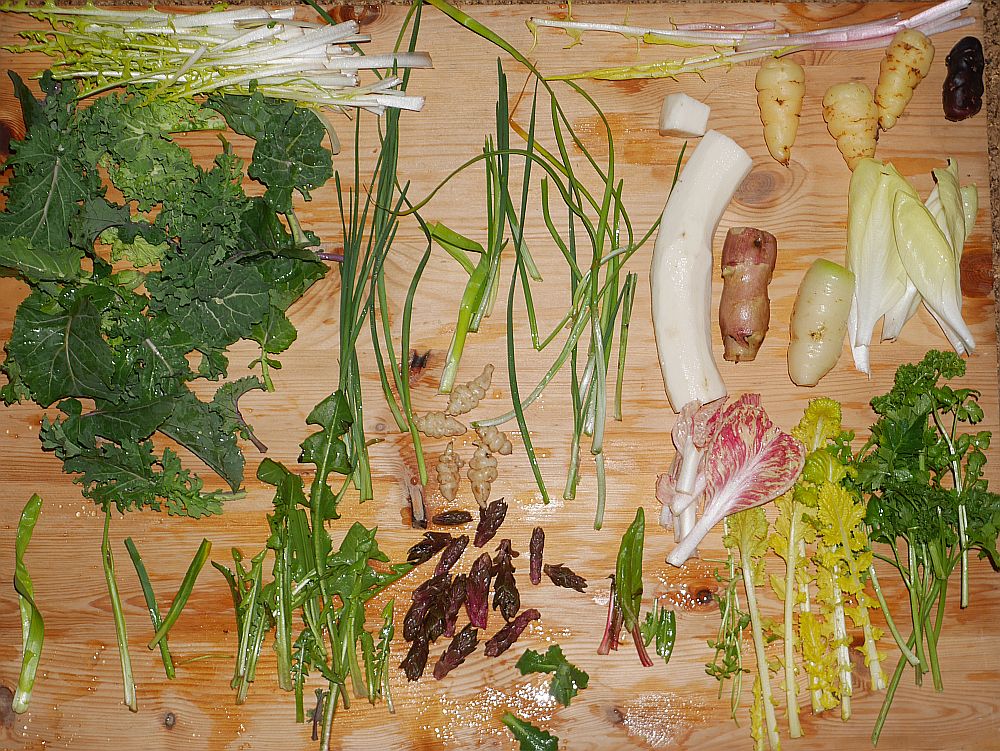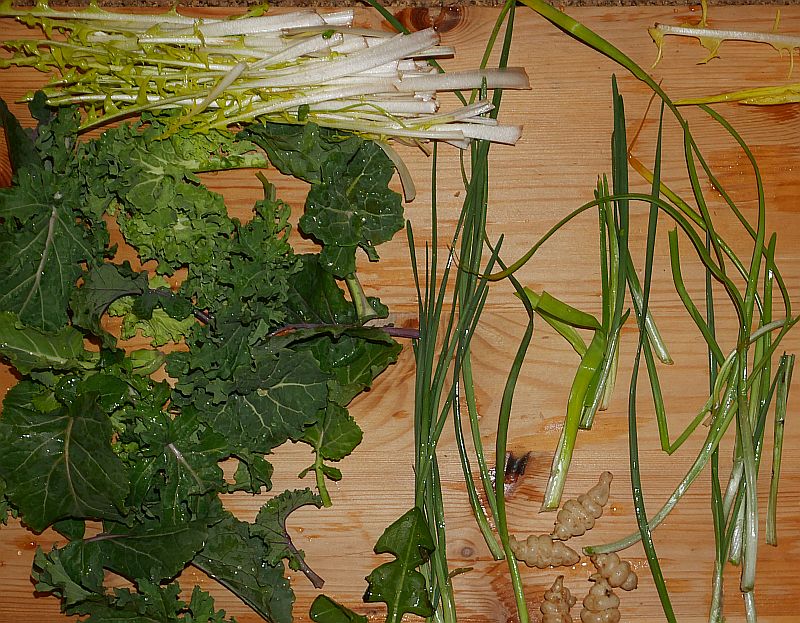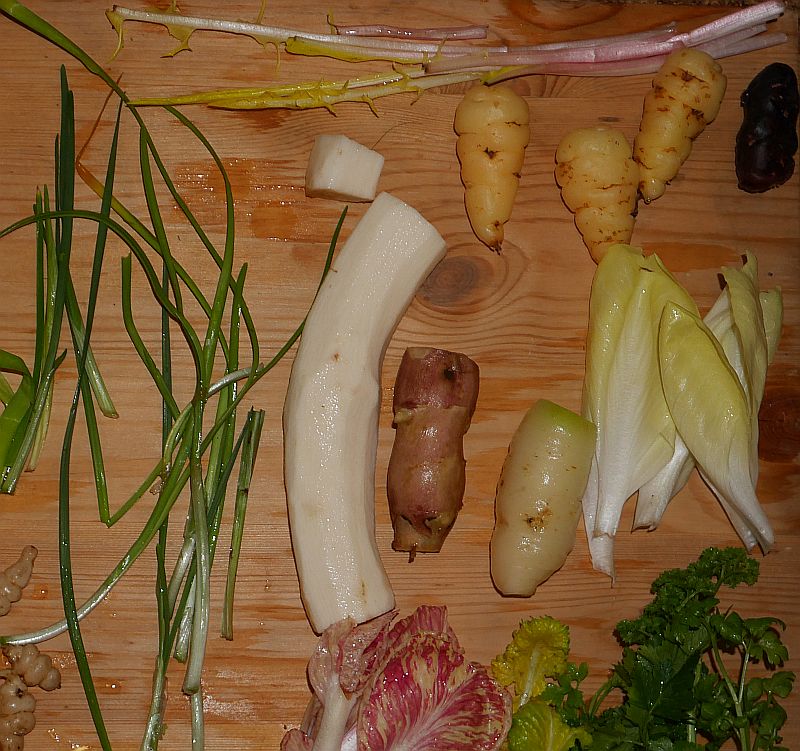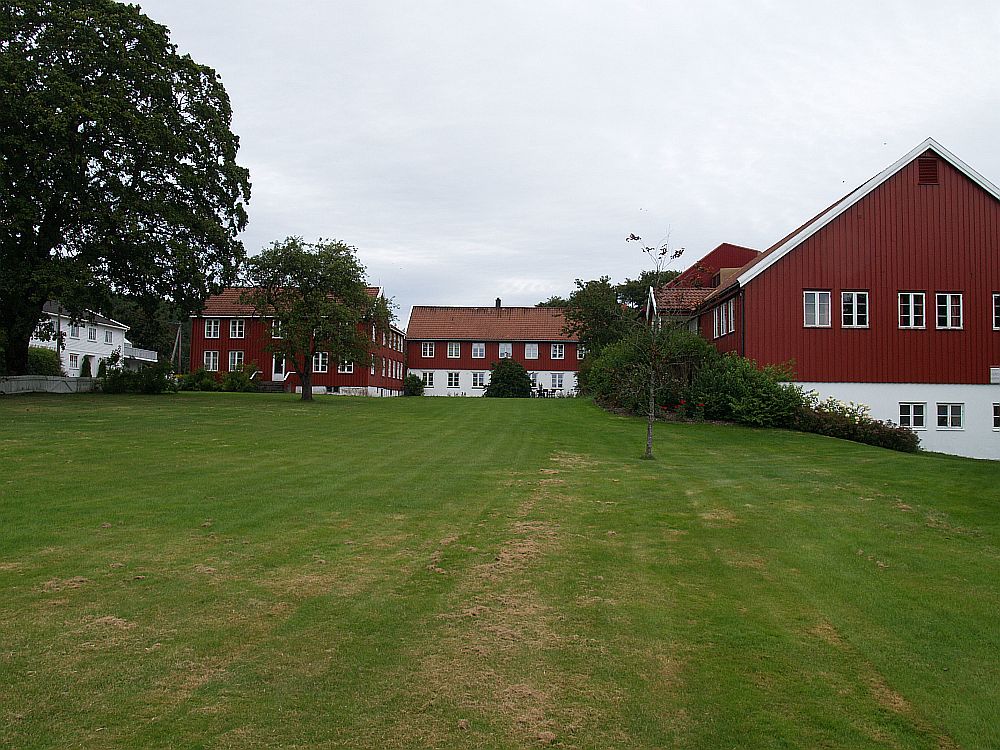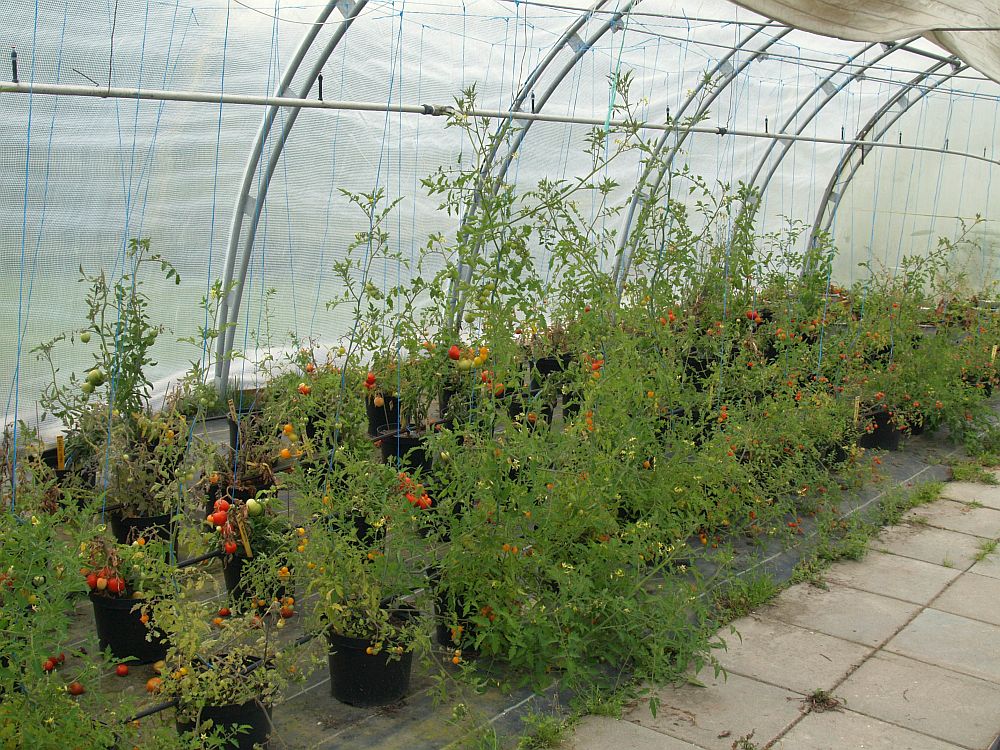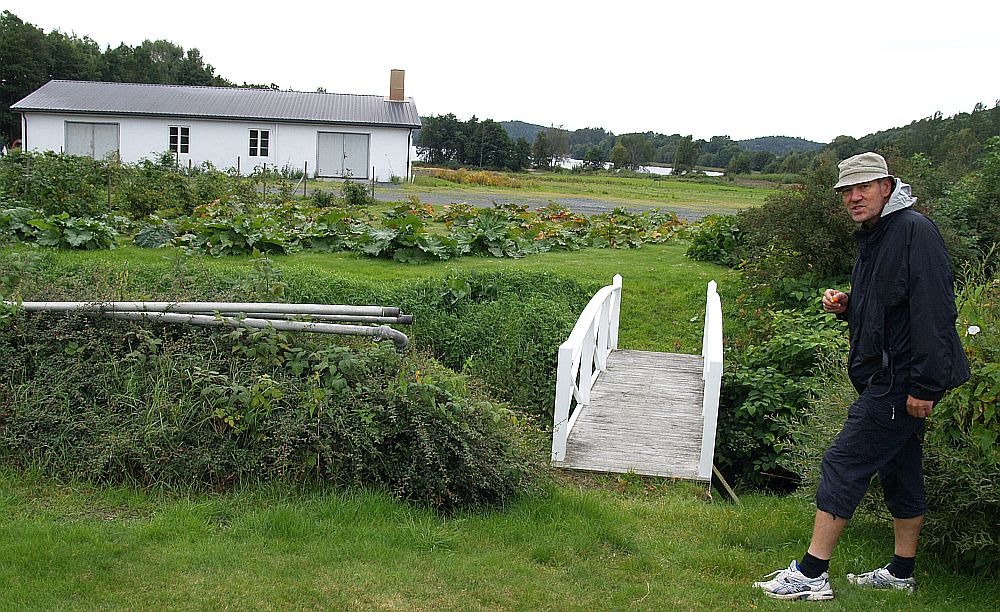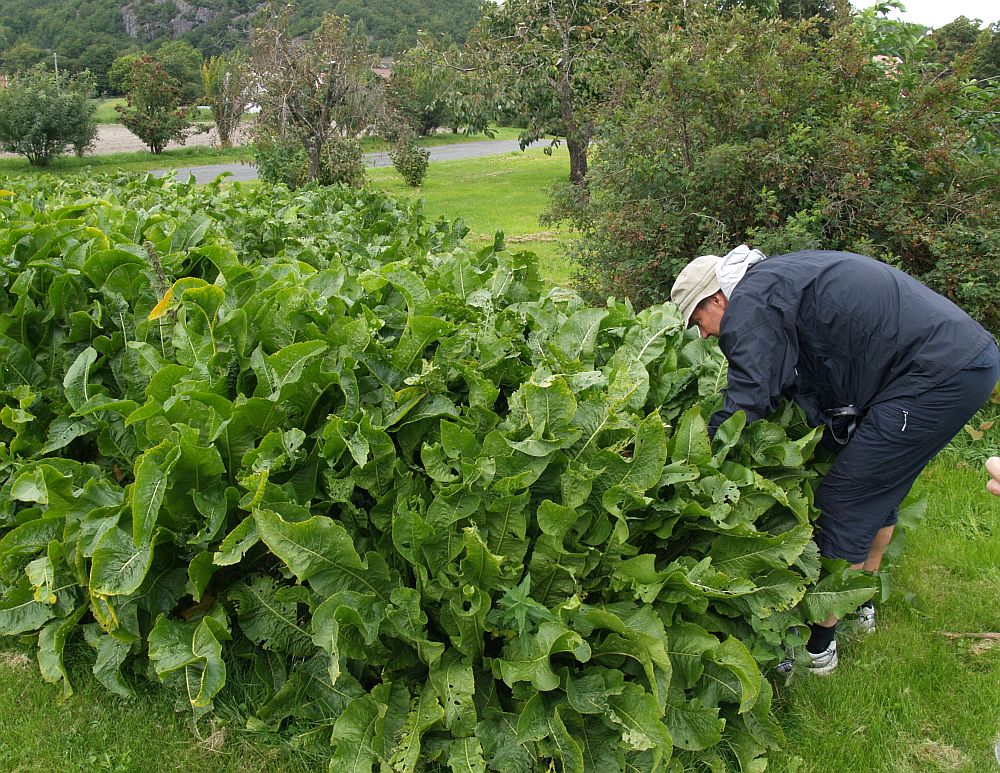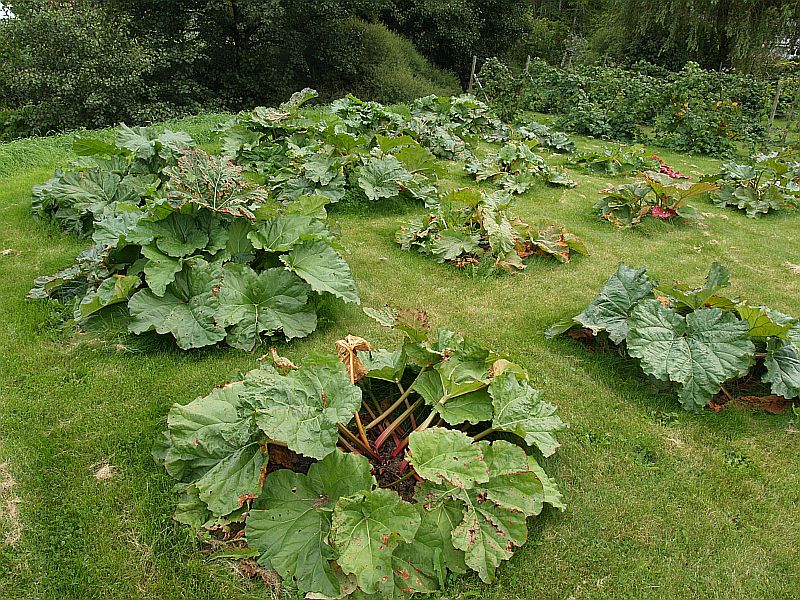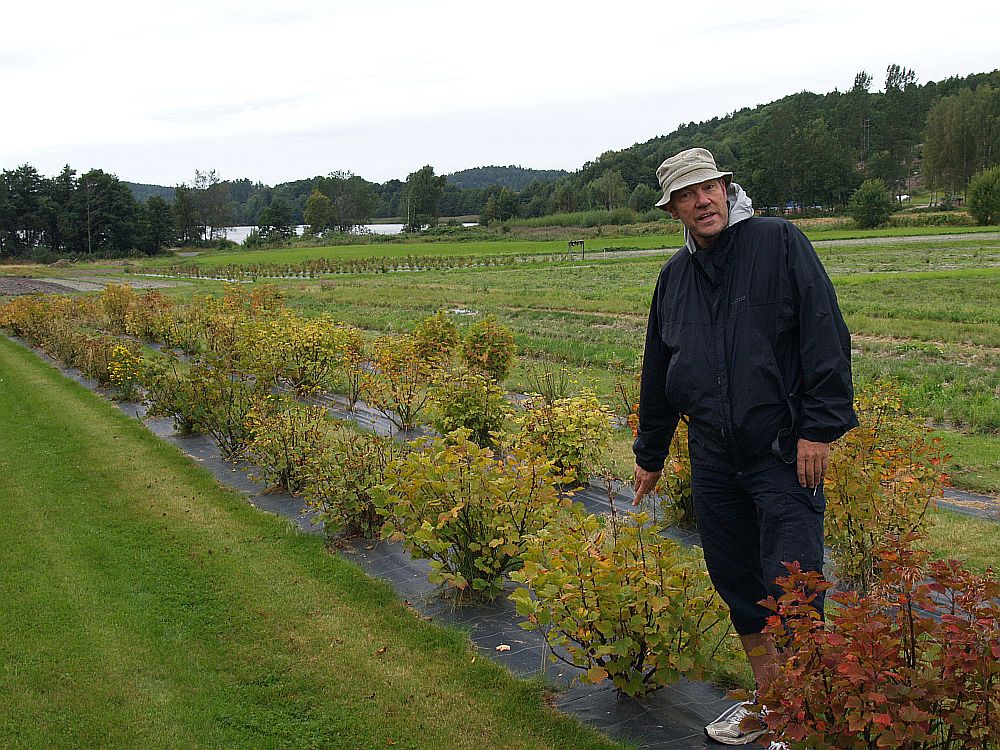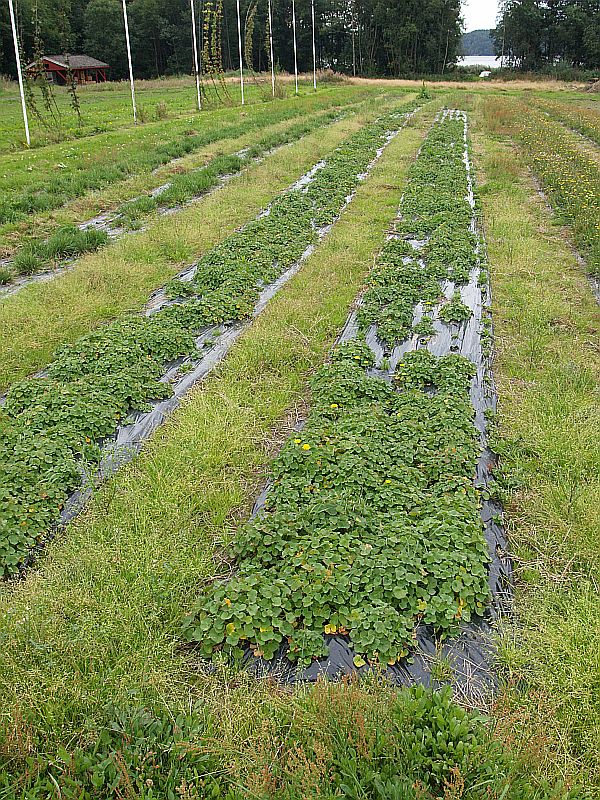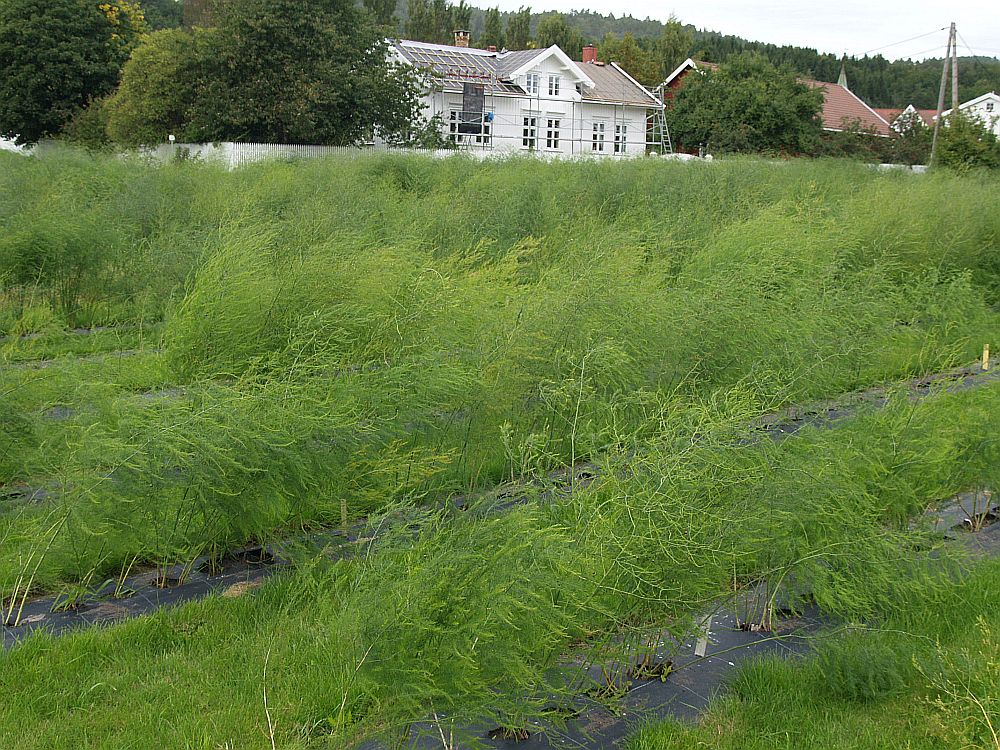When giving talks I like to renew myself and talk about something different each time. For my talk in Copenhagen at the Future Heirloom event last weekend I focussed during part of my presentation on edimentals in the Asteraceae or Compositae (the aster or daisy family / kurvplantefamilien). These are tbe edible perennial vegetables that are most obvious in the autumn garden and often underutilised by chefs in the west. Visiting the World Garden a few days before my talk on 17th October, I gathered flowers from all the flowering Asteraceae and here they are with names: Most are used for their tasty spring shoots and leaves, used cooked and raw, and most have a characteristic fragrant taste / aroma loved in the Far East (as also Chrysanthemum tea is popular and a refreshing accompaniment to spicy dishes). Aster scaber and Ligularia fischeri are nowadays both cultivated in a big way as “sannamul” in Korea and even exported to Korean markets around the world. Young shoots of other Aster sp. are foraged in Asia as is big-leaf Aster, Aster macrophyllus, in North America. Also from North America, cutleaf coneflower Rudbeckia laciniata or sochan was a popular vegetable for the Cherokee first people and in recent years has, maybe not unsurprisingly become a commercial vegetable in Korea. Annual shungiku or chopsuey greens Glebionis coronaria hails from the Mediterranean but is today an important vegetable in the Far East! Others currently in flower are best known as root crops, including (in the picture) Jerusalem artichoke (Helianthus tuberosus) and Dahlia. Yacon (Polymnia sonchifolia) is also autumn flowering but doesn’t manage to flower here (is moved indoors to flower and bulk up). The final flower in the picture is marigold Calendula officinalis, whose culinary use includes decorating and flavouring salads, soups and other dishes.
Most are used for their tasty spring shoots and leaves, used cooked and raw, and most have a characteristic fragrant taste / aroma loved in the Far East (as also Chrysanthemum tea is popular and a refreshing accompaniment to spicy dishes). Aster scaber and Ligularia fischeri are nowadays both cultivated in a big way as “sannamul” in Korea and even exported to Korean markets around the world. Young shoots of other Aster sp. are foraged in Asia as is big-leaf Aster, Aster macrophyllus, in North America. Also from North America, cutleaf coneflower Rudbeckia laciniata or sochan was a popular vegetable for the Cherokee first people and in recent years has, maybe not unsurprisingly become a commercial vegetable in Korea. Annual shungiku or chopsuey greens Glebionis coronaria hails from the Mediterranean but is today an important vegetable in the Far East! Others currently in flower are best known as root crops, including (in the picture) Jerusalem artichoke (Helianthus tuberosus) and Dahlia. Yacon (Polymnia sonchifolia) is also autumn flowering but doesn’t manage to flower here (is moved indoors to flower and bulk up). The final flower in the picture is marigold Calendula officinalis, whose culinary use includes decorating and flavouring salads, soups and other dishes.
Late flowering also means that the Asteraceae are also particularly important for a range of insect pollinators like hoverflies, drone flies and bees as can be seen in the pictures below, all taken in the World Garden:
Tag Archives: Jerusalem artichoke
Rhizo-bacalhau
We occasionally eat wild fish and bacalhau is a favourite made from Norwegian dried cod that can be found in supermarkets here. More or less anything goes in bacalhau (bacalao) and although most people make it in the same way – layers of potato, fish, tomato and onions, often with chili – the Portuguese have hundreds of ways of preparing baccalao (dried cod). Being self-sufficient, detailed recipes aren¨’t useful and we use whatever is available at the moment. Winter is the time for stored bulbs, corms, tubers, rhizomes, and taproots. See below the picture for yesterday’s baccalao ingredients with 14 home grown below surface storage organs plus some greens (I’m pretty sure nobody else had this version of the dish…ever!):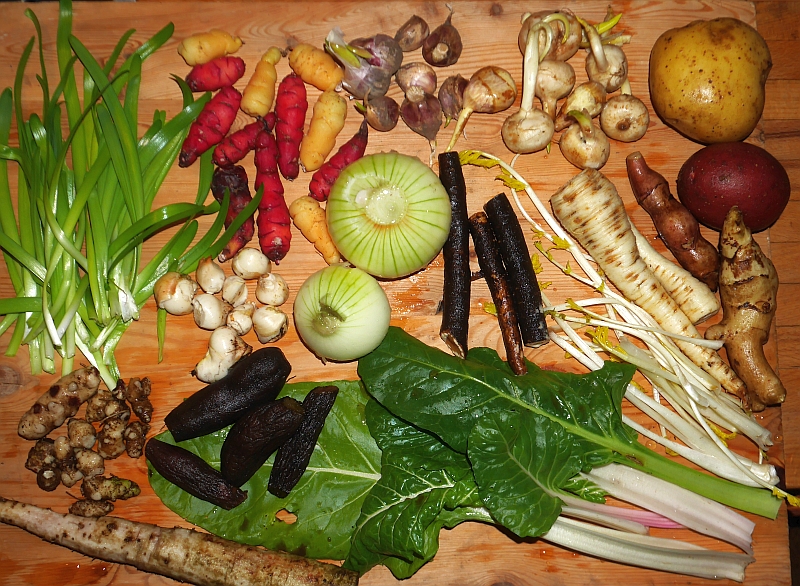
Oca (Oxalis tuberosa): yellow and red varieties
Garlic / hvitløk (Allium sativum)
Wapato (Sagittaria latifolia)
Potato / potet (Solanum tuberosum) – 2 varieties
Jerusalem artichokes / jordskokk (Helianthus tuberosus)
Parsnip / pastinakk (Pastinaca sativa)
Scorzonera / scorsonerrot (Scorzonera hispanica)
Common onion / kepaløk (Allium cepa)
Cacomitl (Tigridia pavonia)
Yacon (Polymnia sonchifolia)
Burdock / storborre (Arctium lappa)
Madeira vine (Anredera cordifolia)
Parsnip / pastinakk (Pastinaca sativa) shoots – had started shooting in the cellar
Leaf beets / bladbete (Beta vulgaris var. flavescens) – 3 varieties
Allium nutans (forced in the living room)
plus (not home grown) organic tomatoes, olive oil and olives
(I forgot the dandelion…will add tonight: we make enough that it lasts for several days….and the taste improves!)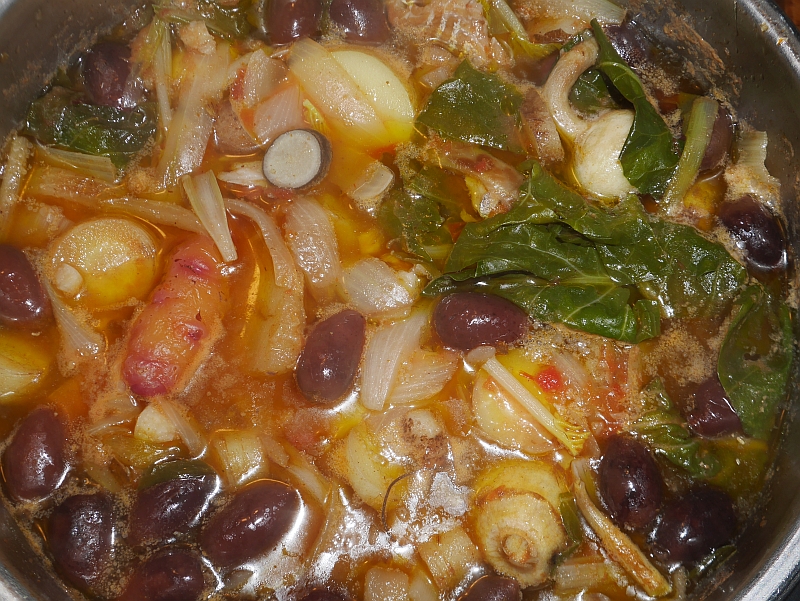
Xmas diversity from the rhizosphere
Presenting this year’s 30 rhizosphantastic Xmas vegetables, all roasted in the oven, served as every year in the last 40 with nut roast, bedecked with the following seeds / bulbils: alpine bistort / harerug (Polygonum viviparum), Himalayan balsam / kjempefringfrø (Impatiens glandulifera), evening primrose / nattlys (Oenothera biennis) and opium poppy (Papaver somniferum). The tubers are listed below the pictures.


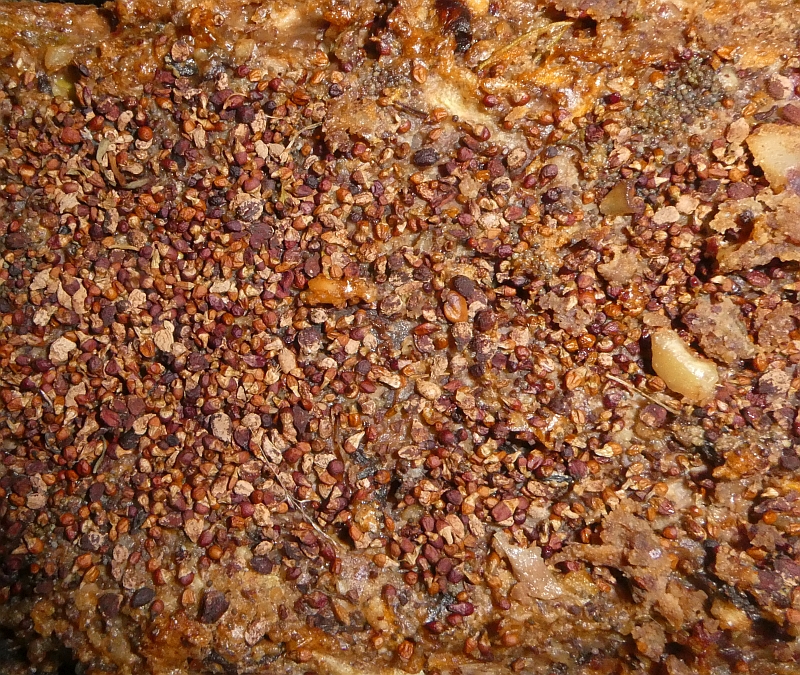
The 30 tubers, roots and rhizomes in the picture are:
Solanum tuberosum (potato / potet: 11 varieties)
Daucus carota (carrot / gulrot)
Oxalis tuberosa (oca: 2 varieties)
Arctium lappa (burdock)
Scorzonera hispanica (Scorzonera / scorsonnerot eller svartrot)
Tigridia pavonia (cacomitl)
Pastinaca sativa (parsnip / pastinakk)
Beta vulgaris (beetroot / rødbete)
Tropaeolum tuberosum (mashua)
Anredera cordifolia (Madeira vine)
Helianthus tuberosus (Jerusalem artichoke / jordskokk : 3 varieties)
Brassica rapa (turnip / nepe)
Brassica napus (swede / kålrot)
Dahlia (Dahlia / georginer)
Polymnia sonchifolia (yacon)
Sagittaria latifolia (wapato)
Allium cepa (onion)
Malvik Jerusalem Artichokes
I harvested my little collection of Jerusalem artichokes (jordskokk) at home this week (the others I’ve posted about were grown at the community garden). All of these varieties I’ve been growing for a number of years:
Dave’s Shrine: purple skinned and long; a runner (jeg tror jeg fikk den fra Terry J. Klokeid for 20 år siden, see more om Terry below)
Urodny: From Danish Seed Savers about 5 years ago; it came to Denmark from the Czech Republic in 1969, early easier to clean variety, white skinned.
Bianka (From Swedish author Lena Israelsson in 2001; it seems to have originated in Sweden from gardening author and broadcaster Åke Truedsson who told me “All I know is that I found this variety everywhere in Russia and Siberia and it’s name was Bianka. I took it home to Sweden in 1989”
Stampede: I had noticed that the description of Stampede in Cornucopia II -a special high-yielding, extra-early strain, was very similar to Bianka which also seemed to be identical to the best yielding Norwegian variety I’d tried – Dagnøytral (dayneutral).
“Flowers in July and matures more than a month before common cultivars. White-skinned tubers are large, often weighing over 1/2 pound each. Relatively dwarf; height about 6 feet. Winter hardy in severe cold. Developed by Indians in northern Ontario who selected ; plants for earliness and tuber size”
I therefore set out to get hold of Stampede in order to compare all three varieties directly. Bunkie Weir on the Homegrown Goodness forum kindly sent me tubers in December 2008. The four varieties including another variety Dwarf Sunray were all grown together and all flowered on more or less the same day, were the same height and had similarly shaped compact knobbly tubers. I concluded that they were all the same clone that had been spread around the world (my conclusion hasn’t been tested genetically).
Fuseau: I think I got this one over 20 years ago from the UK (it was commercially available). This desciption is also from Cornucopia II: “Tapered, sweet potato-like tubers; 4 to 5 inches long, 1 to 1 1/2 inches in diameter; skin tan-colored, very smooth and entirely free of the knobs that characterize the common types and makes cleaning difficult.”
This variety didn’t grow well for me with variable yields from year to year as early frost would stop the tuber growth, but I kept it due to its easy to clean quality. It never managed to flower until this year, but not until mid-November (Stampede / Bianca / Dagnøytral usually flower in late September):
Terry Klokeid
I first came in contact with Terry Klokeid of Amblewood Organic Farm on Salt Spring Island, BC, Canada through the Edible Wild Onelist forum in 1999. He wrote:
“I have 16 varieties of sunroot, with (cooked) flavours ranging from sweet carrot and sweet walnut to globe artichoke flavour to bland and potato-like; sunroots for boiling and baking, and for salads. Container-grown varieties. Varieties for rabbits and other animals. There must be lots more varieties of sunroot out there, and I aim to collect and conserve all of them”
My last contact with him was in 2007 when he wrote: “I have access to the Agriculture Canada collection of a couple hundred accessions, but they are too poorly maintained by them to tell them apart. I started to grow some out in order to size up the tubers, but deer got the entire crop and I have been too distracted to replace it.”
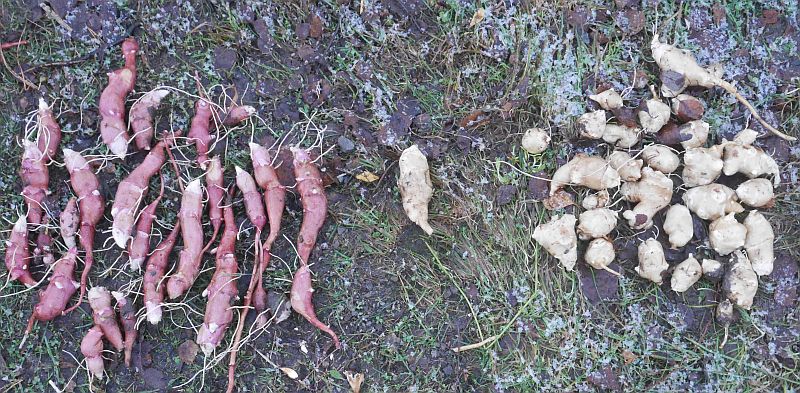

Jerusalem Artichoke Harvest at Væres Venner
At the weekend I harvested all the Jerusalem Artichokes (jordskokk) at the Væres Venner Community Garden. This was two bike loads with a big rucksack to get home :)
This is a mix of experimental JAs from crosses made in Italy by Paolo Gaiardelli between our best variety Dagnøytral (which is probably identical to Stampede, Bianca and Dwarf Sunray) and other varieties (unfortunately I lost the label and am not sure of the details). You can see in the second picture which tubers I’ve selected for growing on!
I also completed bastard (double) digging a new bed at the back of the shed for various climbers including hardy kiwi Actinidia arguta!
JA Quiche
Jerusalem artichokes (JAs / jordskokk) in quiche? Why not?
Yesterday’s quiche included JAs, Hablitzia tamnoides (Caucasian spinach / stjernemelde), Aegopodium podograria (ground elder / skvallerkål), dandelion (løvetann), rehydrated dried chantarelles (kantarell), garlic and chili and poppy seed (opiumvalmue) topping. With a 100% whole grain Svedjerug (old Norwegian rye) and barley (bygg) crust.

19th March Veggies
Continuing my series of veggies harvested from the garden. this time used in a baccalao with parsnip (pastinakk), potato (potet), bulb onions .(kepaløk), Jerusalem artichokes (jordskokk), (bought) organic tomatoes and chili. Greens used from the garden:
Urtcia dioica (nettles/brennesle)
Aegopodium podograria (ground elder/skvallerkål)
Hablitzia tamnoides (Caucasian spinach/stjernemelde)
Rumex patientia (patience dock/hagesyre)
Taraxacum officinale dandichokes (dandelion /løvetann)
Ficaria verna (lesser celandine/vårkål)
Allium sativum shoots (garlic/hvitløk)
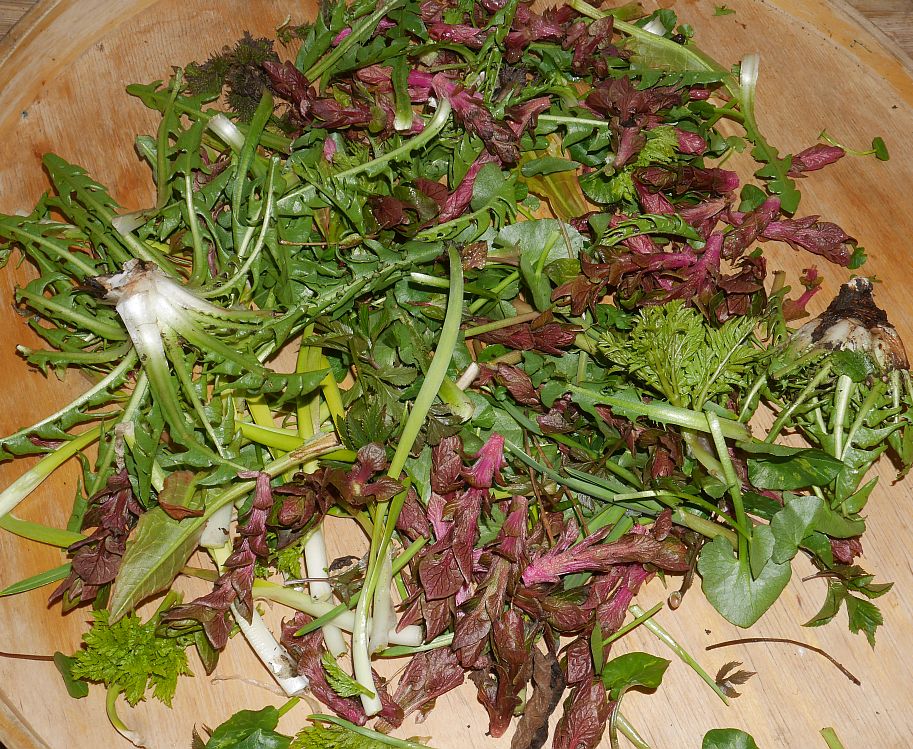
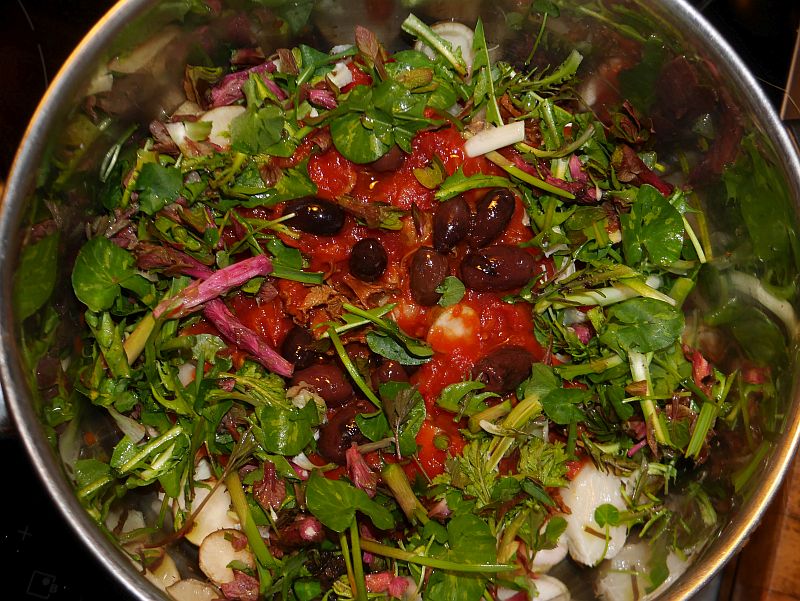
Yacon and sunchoke harvest
H for Hablitzia Extreme Salad
Visit to Bioforsk Landvik in 2012
English: In September 2012, I visited Grimstad in the south of Norway to give a talk about my soon to be published book Around the World in 80 plants to Grimstad bys museer and Aust-Agder sopp- og nyttevekstforening (the museum and local group of the Norwegian Useful Plants Society). I was also invited to nearby Bioforsk Landvik where Åsmund Asdal of the Norwegian Genetic Resource Centre had an office. I had collaborated with Åsmund over a number of years as leader of Norwegian Seed Savers (Planteklubben for Grønnsaker). I gave a short afternoon talk to the staff followed by a tour of the grounds to see first hand several of the clonal collections that Planteklubben received material from each year!











